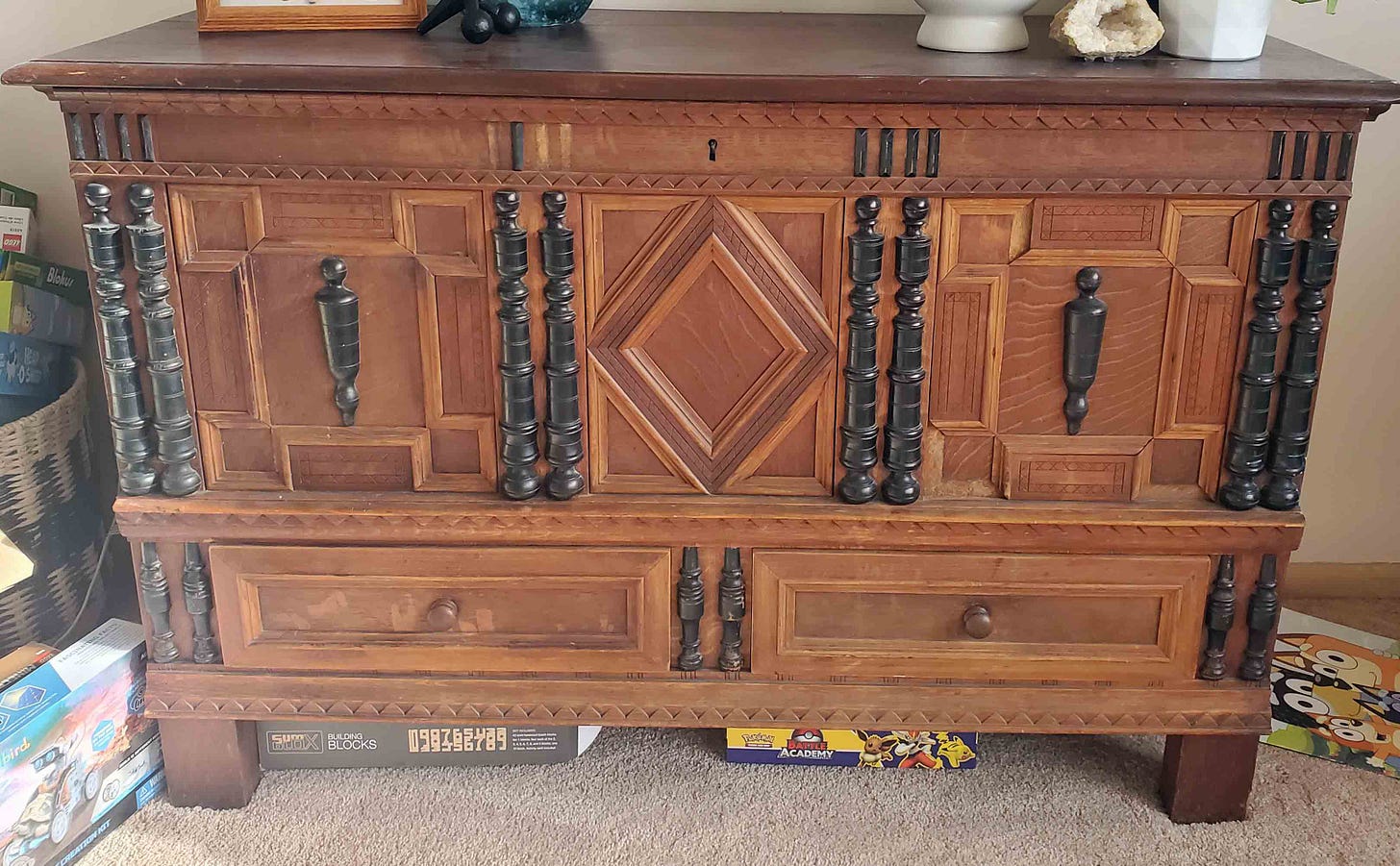Most of my work lately has been editing video - listening to myself prattle on and on...I have a few things going in the shop, but am trying to get this video done before I get too involved in shop work beyond that. So here I sit.
I recently got a couple of photos of a chest - the writer wanting to know what I could tell her about it - and it was a surprise. A reproduction of a Plymouth Colony chest - I have no idea how old or new it is - but it was clearly made by someone who had seen actual period chests from that group. And yet there were some tell-tale things they ignored or changed.
There’s lots of Plymouth Colony/County chests surviving. I first learned about them in Robert Blair St. George’s book The Wrought Covenant. It was an exhibition catalog done in the late 1970s - the text is a bit much - but it identified lots of items and what collections they were in. Over time though, things change hands - I’ve lost track of a lot of this group as the private collection examples get shifted this way and that.
The chests (and the related cupboards) are known for a few things that are nearly unique to them - among them chamfered rear sections - very neatly done. Side-by-side drawers under the chest, as opposed to a large single drawer. The distinctive large moldings above and below the drawers are also keys to this group. Others use large moldings there, the Plymouth area chests & cupboards make the molding as an integral part of the rail - below is a view of a period chest with 4 drawers, showing those molded rails as they enter the stile. I’ve only ever seen this lipped tenon on one other case piece and a couple of wainscot chairs. I can’t tell if the repro chest copied this detail.
Keep reading with a 7-day free trial
Subscribe to Follansbee's Substack to keep reading this post and get 7 days of free access to the full post archives.





